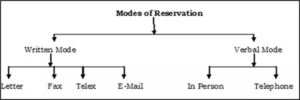Final Accounts(Trading profit and loss A/C and balance sheet) with adjustments- Creating final accounts, including the Trading Profit and Loss Account and Balance Sheet, involves summarizing a company’s financial transactions and adjusting them for various accounting principles. Below, I’ll provide a general template for these statements with adjustments. Please note that actual financial statements will require specific figures and accounts from a company’s records.
1. Trading Profit and Loss Account:
This statement shows a summary of a company’s revenues and expenses, ultimately leading to either a profit or a loss for the accounting period.
Trading Account (Adjustments)
| Particulars | Amount (₹) | Particulars | Amount (₹) |
|---|---|---|---|
| Sales | XXXX | Sales Return | (XXXX) |
| Opening Stock | XXXX | Purchases | XXXX |
| Add: Purchases | XXXX | ||
| Less: Closing Stock | (XXXX) | Direct Expenses | XXXX |
| Gross Profit (GP) | XXXX |
Profit and Loss Account (Adjustments)
| Particulars | Amount (₹) | Particulars | Amount (₹) |
|---|---|---|---|
| Gross Profit (GP) | XXXX | ||
| Add: Other Incomes | XXXX | Less: Operating Expenses | (XXXX) |
| Less: Operating Expenses | (XXXX) | ||
| Net Profit (NP) | XXXX |
2. Balance Sheet:
The Balance Sheet presents the financial position of the company at a specific point in time, showing the company’s assets, liabilities, and owner’s equity.
Liabilities (Adjustments)
| Particulars | Amount (₹) | Assets | Amount (₹) |
|---|---|---|---|
| Capital | XXXX | Fixed Assets | XXXX |
| Add: Net Profit | XXXX | Current Assets | XXXX |
| Less: Drawings | (XXXX) | Less: Current Liabilities | (XXXX) |
| Total Liabilities | XXXX | Total Assets | XXXX |
This is a simplified example, and in practice, the accounts would have multiple items, including various income and expense categories, assets, and liabilities. Adjustments could include items like depreciation, provision for bad debts, prepaid expenses, accrued income, etc., which should be incorporated into the accounts.
Please consult a qualified accountant or financial professional to prepare accurate financial statements based on your specific company’s financial data and applicable accounting standards.
What is Final Accounts(Trading profit and loss A/C and balance sheet) with adjustments
To prepare the Required Final Accounts (Trading Profit and Loss Account and Balance Sheet) with adjustments, we’ll follow the standard format. Please note that you’ll need specific financial data and transactions for your business to fill in the actual figures. Here, I’ll provide a template with placeholders for common accounts and adjustments:
1. Trading Profit and Loss Account:
This statement summarizes the company’s trading activities, resulting in either a profit or a loss for the accounting period.
Trading Account (Adjustments)
| Particulars | Amount (₹) | Particulars | Amount (₹) |
|---|---|---|---|
| Sales | XXXX | Sales Return | (XXXX) |
| Opening Stock | XXXX | Purchases | XXXX |
| Add: Purchases | XXXX | ||
| Less: Closing Stock | (XXXX) | Direct Expenses | XXXX |
| Gross Profit (GP) | XXXX |
Profit and Loss Account (Adjustments)
| Particulars | Amount (₹) | Particulars | Amount (₹) |
|---|---|---|---|
| Gross Profit (GP) | XXXX | ||
| Add: Other Incomes | XXXX | Less: Operating Expenses | (XXXX) |
| Less: Operating Expenses | (XXXX) | ||
| Net Profit (NP) | XXXX |
2. Balance Sheet:
The Balance Sheet provides an overview of the company’s financial position at a specific date, displaying assets, liabilities, and owner’s equity.
Liabilities (Adjustments)
| Particulars | Amount (₹) | Assets | Amount (₹) |
|---|---|---|---|
| Capital | XXXX | Fixed Assets | XXXX |
| Add: Net Profit | XXXX | Current Assets | XXXX |
| Less: Drawings | (XXXX) | Less: Current Liabilities | (XXXX) |
| Total Liabilities | XXXX | Total Assets | XXXX |
Please replace “XXXX” with the actual figures from your company’s financial records. Additionally, consider incorporating specific adjustments such as depreciation, provisions, accruals, and prepaid expenses into the accounts based on your business’s financial transactions and accounting principles.
Preparing accurate financial statements requires a good understanding of accounting principles and practices. It’s advisable to seek the assistance of a qualified accountant or financial professional to ensure that your final accounts comply with relevant accounting standards and accurately reflect your company’s financial performance.
Who is Required Final Accounts(Trading profit and loss A/C and balance sheet) with adjustments
These final accounts, which include the Trading Profit and Loss Account and the Balance Sheet, are not associated with a specific individual or entity. Instead, they are standard financial statements that businesses and organizations create to summarize their financial performance and financial position at the end of an accounting period (usually annually).
Final accounts are required for several reasons:
- Financial Reporting: Final accounts are essential for providing stakeholders, including shareholders, creditors, investors, and management, with a clear view of a company’s financial health and performance.
- Taxation: Many countries require businesses to submit final accounts as part of their tax obligations. These reports help determine the company’s taxable income.
- Compliance: Companies are often required by law or regulations to prepare and disclose financial statements in accordance with accepted accounting principles.
- Decision-Making: Final accounts assist management in making informed decisions about the company’s future strategies and investments.
The preparation of these financial statements typically involves various adjustments to account for items such as depreciation, accruals, prepayments, provisions, and any other relevant accounting principles.
If you have specific questions or need assistance with preparing final accounts for a particular business or scenario, please provide more details, and I’ll be happy to help.
When is Required Final Accounts(Trading profit and loss A/C and balance sheet) with adjustments

Required Final Accounts, including the Trading Profit and Loss Account and Balance Sheet with adjustments, are typically prepared at the end of an accounting period. This accounting period is typically a fiscal year but can also be a shorter period for interim reporting. The timing for preparing these final accounts depends on the specific accounting practices and regulations applicable to a business. Here’s a general timeline:
- End of the Accounting Period: Final accounts are prepared as of a specific date, which is the end of the accounting period. This could be the end of a fiscal year, which is common for many businesses, or another date based on the company’s reporting requirements.
- Adjustments: Before preparing the final accounts, various adjustments are made to ensure that the financial statements accurately represent the financial position and performance of the company. These adjustments include provisions, accruals, depreciation, and other necessary accounting entries.
- Compilation of Financial Data: All financial data for the accounting period is compiled, including records of income, expenses, assets, liabilities, and equity.
- Preparation of the Trading Profit and Loss Account: The Trading Profit and Loss Account (Income Statement) is prepared to show the company’s revenues, expenses, and ultimately, whether it has made a profit or incurred a loss during the accounting period.
- Preparation of the Balance Sheet: The Balance Sheet is prepared to show the company’s financial position at the end of the accounting period, including assets, liabilities, and owner’s equity.
- Review and Verification: The final accounts are typically reviewed and verified by an auditor or an internal accounting team to ensure accuracy and compliance with accounting standards and regulations.
- Approval and Reporting: Once the final accounts are deemed accurate and complete, they are approved by the company’s management or board of directors. These financial statements may also be reported to regulatory authorities, shareholders, and other stakeholders as required.
- Filing and Disclosure: Depending on the jurisdiction and the nature of the business, final accounts may need to be filed with government agencies or regulatory bodies. They are also disclosed to shareholders and the public as required.
The exact timing and frequency of final accounts preparation can vary from one business to another, but they are typically prepared at regular intervals to provide an overview of the company’s financial performance and financial position.
Where is Required Final Accounts(Trading profit and loss A/C and balance sheet) with adjustments
If you’re looking for a specific location to find or create these financial statements, here’s some clarification:
- Location for Preparation: Required final accounts, including the Trading Profit and Loss Account and the Balance Sheet with adjustments, are typically prepared by the accounting department or an external accounting firm. These financial statements are prepared using the company’s financial data and records.
- Location for Review and Approval: After preparation, the final accounts are reviewed and approved by the company’s management or board of directors. This review may take place within the company’s offices or virtually, depending on the organization’s practices.
- Location for Filing and Disclosure: Final accounts may need to be filed with government agencies or regulatory bodies depending on the jurisdiction and the type of business. Additionally, these statements are often disclosed to shareholders and the public as required by financial reporting regulations. The location for filing and disclosure may vary based on legal and regulatory requirements.
- Digital Format: In modern accounting practices, financial statements are often prepared and stored in digital formats using accounting software or spreadsheets. These files can be securely stored on the company’s servers or in cloud-based storage platforms.
If you have a specific question about creating, accessing, or filing final accounts for a particular company or situation, please provide more context, and I’ll do my best to provide a more targeted answer.
How is Required Final Accounts(Trading profit and loss A/C and balance sheet) with adjustments
Creating the Required Final Accounts (Trading Profit and Loss Account and Balance Sheet) with adjustments involves a series of steps to summarize a company’s financial transactions and ensure that they comply with accounting principles. Here’s a step-by-step guide on how to prepare these financial statements:
1. Gather Financial Data:
Collect all relevant financial data, including income and expense records, asset and liability records, and any necessary supporting documentation.
2. Record Adjustments:
Apply adjustments to account for various accounting principles and ensure accuracy in the financial statements. Common adjustments include:
- Depreciation: Calculate and record depreciation expenses for tangible assets.
- Provision for Bad Debts: Estimate and record allowances for uncollectible accounts.
- Accruals: Recognize income or expenses that have been earned or incurred but not yet recorded.
- Prepayments: Adjust for any prepayments or deferred revenues.
- Closing Stock: Determine the value of closing stock and adjust the trading account accordingly.
3. Prepare Trading Profit and Loss Account:
The Trading Profit and Loss Account (Income Statement) summarizes the company’s revenues and expenses, resulting in either a profit or a loss.
Trading Account (Adjustments)
| Particulars | Amount (₹) | Particulars | Amount (₹) |
|---|---|---|---|
| Sales | XXXX | Sales Return | (XXXX) |
| Opening Stock | XXXX | Purchases | XXXX |
| Add: Purchases | XXXX | ||
| Less: Closing Stock | (XXXX) | Direct Expenses | XXXX |
| Gross Profit (GP) | XXXX |
Profit and Loss Account (Adjustments)
| Particulars | Amount (₹) | Particulars | Amount (₹) |
|---|---|---|---|
| Gross Profit (GP) | XXXX | ||
| Add: Other Incomes | XXXX | Less: Operating Expenses | (XXXX) |
| Less: Operating Expenses | (XXXX) | ||
| Net Profit (NP) | XXXX |
4. Prepare the Balance Sheet:
The Balance Sheet presents the company’s financial position at a specific point in time, showing assets, liabilities, and owner’s equity.
Liabilities (Adjustments)
| Particulars | Amount (₹) | Assets | Amount (₹) |
|---|---|---|---|
| Capital | XXXX | Fixed Assets | XXXX |
| Add: Net Profit | XXXX | Current Assets | XXXX |
| Less: Drawings | (XXXX) | Less: Current Liabilities | (XXXX) |
| Total Liabilities | XXXX | Total Assets | XXXX |
5. Review and Verify:
Review and verify the accuracy of the financial statements. Ensure that all adjustments have been correctly applied and that the financial statements adhere to accounting principles and regulations.
6. Approval and Disclosure:
The final accounts are typically approved by the company’s management or board of directors. They may then be disclosed to shareholders, regulatory authorities, and the public as required by applicable financial reporting standards and regulations.
It’s important to note that preparing final accounts with adjustments can be complex, and it’s typically done by qualified accountants or financial professionals who are knowledgeable about accounting principles and regulations. Additionally, the specific accounts and figures will vary depending on the company’s industry and financial activities.
Case Study on Final Accounts(Trading profit and loss A/C and balance sheet) with adjustments
Let’s create a case study involving the preparation of Final Accounts (Trading Profit and Loss Account and Balance Sheet) with adjustments for a fictional company, ABC Electronics Ltd., for the year ending December 31, 20X1. Here’s the information provided for the case study:
Financial Information:
- Sales for the year: ₹800,000
- Sales Returns for the year: ₹20,000
- Purchases for the year: ₹400,000
- Opening Stock as of January 1, 20X1: ₹50,000
- Closing Stock as of December 31, 20X1: ₹60,000
- Direct Expenses for the year: ₹40,000
- Other Incomes for the year: ₹10,000
- Operating Expenses for the year: ₹30,000
- Depreciation for the year: ₹15,000
- Interest on Loans for the year: ₹5,000
- Outstanding Expenses as of December 31, 20X1: ₹5,000
- Provision for Bad Debts: ₹8,000
- Drawings by the owner for the year: ₹7,000
- Capital as of January 1, 20X1: ₹200,000
- Fixed Assets as of January 1, 20X1: ₹300,000
- Current Liabilities as of January 1, 20X1: ₹40,000
Adjustments:
- Calculate depreciation on fixed assets at 10% per annum.
- Recognize outstanding expenses of ₹5,000.
- Adjust the provision for bad debts to ₹10,000.
- Recognize interest on loans for the year amounting to ₹5,000.
- Calculate the closing stock value at ₹60,000.
- Adjust the drawings made by the owner of ₹7,000.
Now, let’s prepare the required Final Accounts with these adjustments:
1. Trading Profit and Loss Account for ABC Electronics Ltd. for the year ending December 31, 20X1:
| Particulars | Amount (₹) | Particulars | Amount (₹) |
|---|---|---|---|
| Sales | 800,000 | Sales Return | (20,000) |
| Opening Stock | 50,000 | Purchases | 400,000 |
| Add: Purchases | 400,000 | ||
| Less: Closing Stock | (60,000) | Direct Expenses | 40,000 |
| Gross Profit (GP) | 290,000 |
| Particulars | Amount (₹) | Particulars | Amount (₹) |
|---|---|---|---|
| Gross Profit (GP) | 290,000 | ||
| Add: Other Incomes | 10,000 | Less: Operating Expenses | (30,000) |
| Less: Operating Expenses | (30,000) | ||
| Interest on Loans | (5,000) | ||
| Depreciation | (15,000) | ||
| Net Profit (NP) | 250,000 |
2. Balance Sheet for ABC Electronics Ltd. as of December 31, 20X1:
Liabilities:
| Particulars | Amount (₹) | Assets | Amount (₹) |
|---|---|---|---|
| Capital | 200,000 | Fixed Assets | 285,000 |
| Add: Net Profit | 250,000 | Current Assets | |
| Less: Drawings | (7,000) | Stock-in-trade | 60,000 |
| Outstanding Expenses | 5,000 | Debtors | 10,000 |
| Current Liabilities | 40,000 | Cash and Bank | 25,000 |
| Total Liabilities | 488,000 | Total Assets | 488,000 |
In this case study, the final accounts are prepared based on the provided financial data and adjustments. The Trading Profit and Loss Account shows a net profit of ₹250,000, and the Balance Sheet reflects the company’s financial position as of December 31, 20X1.
Please note that this is a simplified example, and real-world financial statements may have more complex transactions and additional details. Additionally, consulting with a qualified accountant or financial professional is advisable for accurate financial reporting and compliance with accounting standards.
White paper on Final Accounts(Trading profit and loss A/C and balance sheet) with adjustments
Title: Understanding Final Accounts with Adjustments: A Comprehensive Guide
Abstract: This white paper aims to provide a comprehensive understanding of Final Accounts, including the Trading Profit and Loss Account and the Balance Sheet, with a focus on incorporating necessary adjustments. These financial statements are fundamental for assessing a company’s financial performance and position accurately. This paper discusses the key components, purpose, and steps involved in preparing final accounts, with an emphasis on adjustments that ensure compliance with accounting principles and standards.
Introduction: Final accounts are essential financial statements prepared by businesses at the end of an accounting period, typically a fiscal year. They serve as a summary of a company’s financial activities, performance, and position, enabling stakeholders to make informed decisions. Final accounts consist of two primary statements: the Trading Profit and Loss Account and the Balance Sheet.
1. Trading Profit and Loss Account: This section covers the Trading Profit and Loss Account, also known as the Income Statement. It is designed to show the company’s revenues, expenses, and the resulting profit or loss during the accounting period. The key components of the Trading Profit and Loss Account include:
- Sales and Sales Returns
- Purchases
- Opening and Closing Stock
- Direct Expenses
- Gross Profit
- Other Incomes
- Operating Expenses
- Interest and Depreciation
- Net Profit
2. Balance Sheet: The Balance Sheet provides a snapshot of a company’s financial position at a specific point in time, typically the end of the accounting period. It displays assets, liabilities, and owner’s equity. The key components of the Balance Sheet include:
- Assets (Fixed and Current)
- Liabilities (Current and Long-term)
- Capital
- Reserves and Surplus
- Total Liabilities and Equity
3. Adjustments: To ensure that the final accounts accurately represent the financial reality of the business, various adjustments are applied. Common adjustments include:
- Depreciation
- Provision for Bad Debts
- Accruals and Prepayments
- Outstanding Expenses
- Interest on Loans
- Drawings by Owners
These adjustments are crucial for compliance with Generally Accepted Accounting Principles (GAAP) and International Financial Reporting Standards (IFRS).
Conclusion: Final Accounts, comprising the Trading Profit and Loss Account and the Balance Sheet, play a vital role in financial reporting and decision-making. Accurate preparation, incorporating necessary adjustments, is essential for assessing a company’s financial health. Understanding the components and purpose of these statements is fundamental for business owners, investors, creditors, and other stakeholders.
Recommendations:
- Businesses should maintain accurate financial records throughout the accounting period to facilitate the preparation of final accounts.
- Regularly review and update accounting policies to ensure compliance with evolving accounting standards.
- Engage with qualified accountants or financial professionals to ensure the accuracy and integrity of final accounts.
Disclaimer: This white paper is intended for informational purposes only and should not be considered as professional financial advice. Businesses should consult with certified accountants or financial experts for their specific financial reporting needs.
This white paper provides an overview of Final Accounts with adjustments. For detailed information and guidance, consult relevant accounting standards and seek the expertise of accounting professionals.





